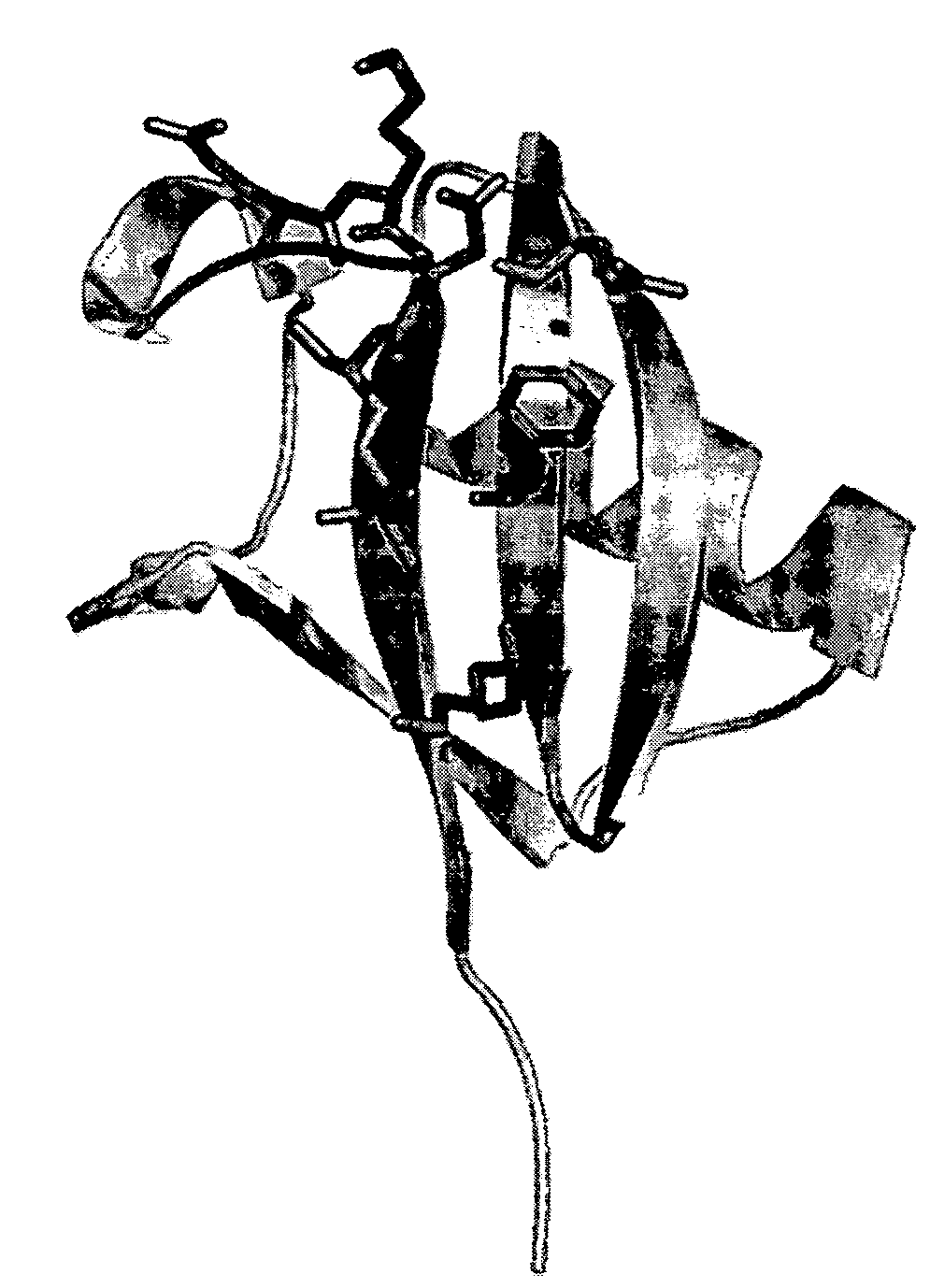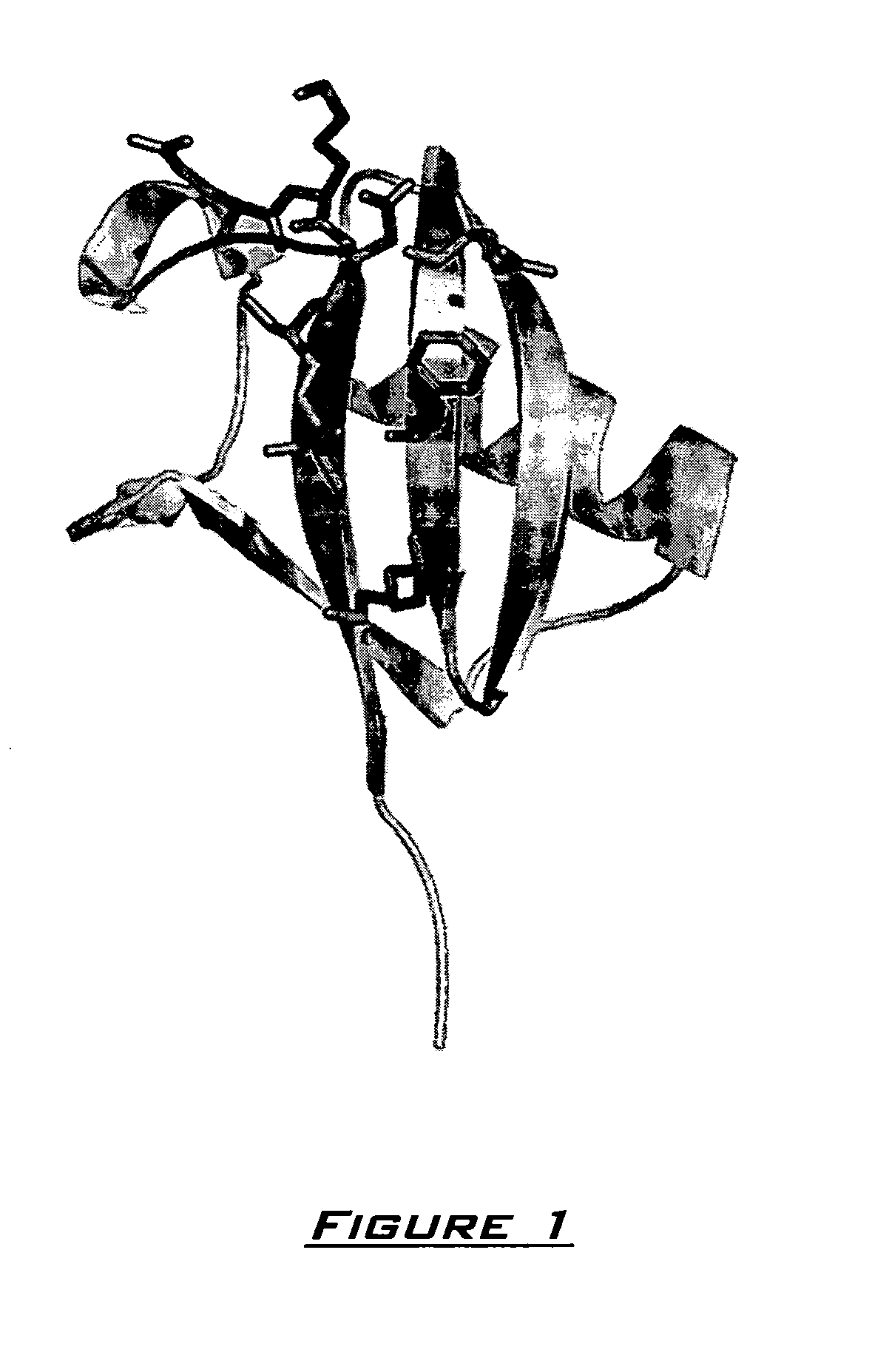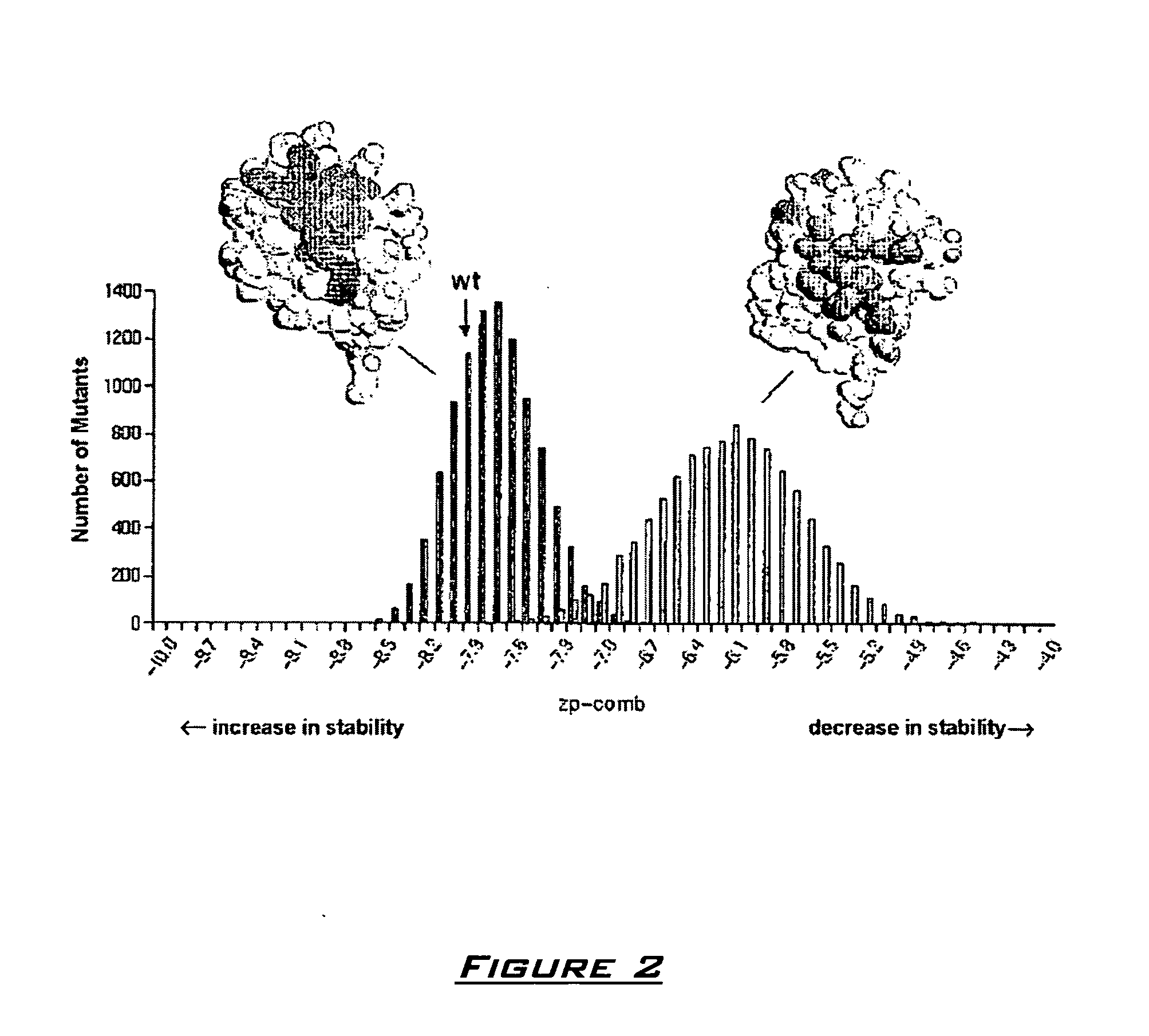Generation of artificial binding proteins on the basis of ubiquitin proteins
a technology of ubiquitin and binding proteins, applied in combinational chemistry, chemical libraries, libraries, etc., can solve the problems of limited practical use of antibodies, and production of functional antibodies in eukaryotic cell culture systems, and is extraordinarily cost-intensiv
- Summary
- Abstract
- Description
- Claims
- Application Information
AI Technical Summary
Benefits of technology
Problems solved by technology
Method used
Image
Examples
example 1
Provision of a Synthetic Ubiquitin Gene for the Selection of Modified Proteins having a Newly Generated Binding Affinity
[0156]Genetic engineering work was performed by standard protocols known to those skilled in the art such as e.g. those of Sambrook et al. (2001).
[0157]For the preparation of the DNA sequence (SEQ ID NO. 1) for a modified ubiquitin protein scaffold having the substitutions Ile44Ala, Lys48Arg, Arg54Leu, Val70Ala, Arg72Leu, Gly75Ala as well as the deletion of Gly76 as a starting point for the preparation of artificial binding proteins the procedure was as follows: for gene synthesis a PCR reaction was performed in a volume of 50 μl in which 2.5 μl each of the six oligodeoxynucleotides (SEQ ID NO. 2, SEQ ID NO. 3, SEQ ID NO. 4, SEQ ID NO. 5, SEQ ID NO. 6, SEQ ID NO. 7; 0.1 μM each) representing together in their base pair sequence the gene to be synthesized were present as templates. The sequences of the oligodeoxynucleotides employed each corresponded to segments of ...
example 2
Preparation of a Library of Ubiquitin Variations
[0160]For random site-specific mutagenesis of 8 codons at the amino and carboxy terminus, respectively, of the synthetic ubiquitin gene two successive PCR reactions were performed. The first amplification step was performed using Pfu polymerase (Promega) in a volume of 10×50 μl. For this purpose, 5 μl of the supplied 10×Pfu buffer as well as 4 μl dNTP mix were used per each sample and filled up with H2O. Furthermore, each sample contained 2.5 μl of flanking primers (SEQ ID NO. 10, SEQ ID NO. 11; 10 μM) for the introduction of the desired base pair substitutions. As a template, 1.0 ng pMUBI-1 were used carrying the non-mutated synthetic ubiquitin gene. Following the addition of 2.5 U of Pfu polymerase (see above) an incubation was performed for 25 cycles of each 1 min at 94° C., 1 min at 60° C. and for 1.5 min at 72° C. A final incubation was carried out for 5 min at 72° C. For the selective degradation of the template DNA employed 10 U...
example 3
Preparation of Ubiquitin Variations on the Phage Surface and Selection of Ubiquitin Variations Against Proteins and Haptens
[0165]For the production of phagemids variations of the mutated ubiquitin presented on the surface, 100 ml of 2×YT / chloramphenicol medium were inoculated with 1.0 ml of the glycerol culture obtained in Example 2 and incubated for 16 hours at 37° C. and 220 ppm. With 10 ml of this stationary culture 1 liter of 2×YT / chloramphenicol medium was inoculated and agitated at 37° C. and 220 rpm up to a cell density of OD600=0.4. The infection was carried out with 1013 cfu of M13KO7 helper phages and an incubation at 37° C. without shaking for 30 min. After addition of 50 mg / l kanamycine the sample was agitated for 30 min at 37° C. and 220 rpm, and then the gene expression on pMUBI-1 was induced by adjusting the culture to 0.2 mg / l anhydrotetracycline (stock solution: 2.0 mg / ml in DMF). The incubator temperature was then decreased to 26° C., and the culture was agitated f...
PUM
| Property | Measurement | Unit |
|---|---|---|
| dissociation constants | aaaaa | aaaaa |
| flow rate | aaaaa | aaaaa |
| volume | aaaaa | aaaaa |
Abstract
Description
Claims
Application Information
 Login to View More
Login to View More - R&D
- Intellectual Property
- Life Sciences
- Materials
- Tech Scout
- Unparalleled Data Quality
- Higher Quality Content
- 60% Fewer Hallucinations
Browse by: Latest US Patents, China's latest patents, Technical Efficacy Thesaurus, Application Domain, Technology Topic, Popular Technical Reports.
© 2025 PatSnap. All rights reserved.Legal|Privacy policy|Modern Slavery Act Transparency Statement|Sitemap|About US| Contact US: help@patsnap.com



